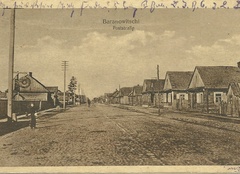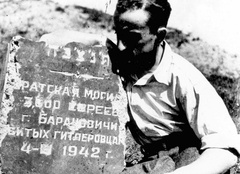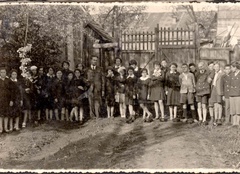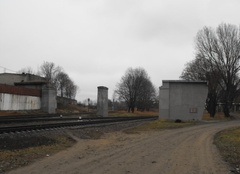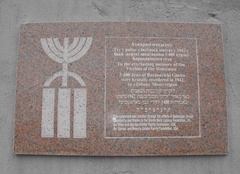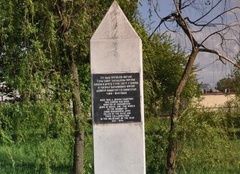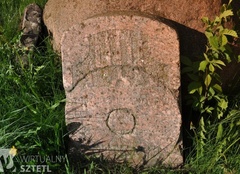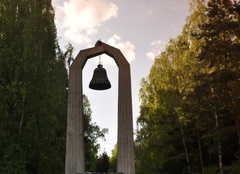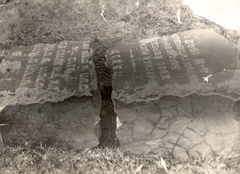Baranowicze
Pronounced "Bah-rahn-oh-VEECH-eh" (Belarussian: Baranovichi / Бара́навічы)
Jews began settling in the forested area of Baranowicze around the 1870s at a time when the town belonged to a part of Poland that had been partitioned to the Russian Empire. In addition to Jews, the multicultural town was also home to Byelorussian, Polish and Russian communities.
Baranowicze served as an important transportation hub between the larger cities of Minsk, Moscow and Warsaw. From the 1890s, a Kosher Food organization helped distribute food to Jewish soldiers stationed in town. By 1897 nearly half of the town’s almost 5,000 residents were Jewish, despite the fact that Jews were not legally allowed to live in Baranowicze until 1903.
During World War I (1914-1918), Jews sometimes earned money by supplying the Russian army with goods and services. Survivor Renia Berzak’s parents owned one such surplus store, selling items such as clothes and food. The family of Survivor Samuel Bratkovsky owned a general store that was burned down during the war after which they turned to farm labor.
After the war Baranowicze was incorporated into the newly reconstituted Republic of Poland. A variety of Jewish schools, including Hebrew, Yiddish, and Orthodox institutions, were founded to educate the children of the community. Bratkovsky recalled being sent to a Jewish kindergarten at the age of five, where he and about ten other children were instructed by a local rabbi. The government even opened a Polish-language school for Jews.
In 1921 the percent of Jews living in Baranowicze reached its peak of 7,796 recorded Jewish residents, making up 67.9 percent of the total population. In the 1930s, when Jews were second in population only to the majority Byelorussian ethnic group, a Jew usually held the position of Deputy Mayor.
In addition to groups such as the kosher food organization, other mutual aid societies provided help to the Jews of Baranowicze. The Lidat Zenek society gave poor travelers a place to stay overnight, and the Bikkur Holim society regularly visited ill members of the community. By 1930, 30 Jewish doctors, 5 Jewish pharmacies and an infant care station could be found in the town.
Baranowicze was known as a center of Orthodoxy in Poland where Jews usually followed more traditional styles of dress and worship. Berzak recalled that her family spoke both Polish and Yiddish at home, and remembered saying the prayers her grandparents taught her at home with her family.
A variety of Jewish political organizations also thrived. These included the Bund group that organized Jewish workers to improve working conditions, as well as Zionist groups that advocated the return of Jews to Palestine. Six Yiddish weeklies published news that reflected the differing political viewpoints of the Jewish community.
Survivor Renia Berzak said, “It was a nice community. Everybody knew each other… I thought it was a wonderful life.”
In September 1939 Baranowicze was invaded by the Soviet Union. The economy of Baranowicze was nationalized, Jewish community organizations were liquidated, and political activists were exiled to the interior of Russia. The Jewish community was completely destroyed after the German army invaded on June 25, 1941.
Baranowicze: Photographs & Artifacts
-
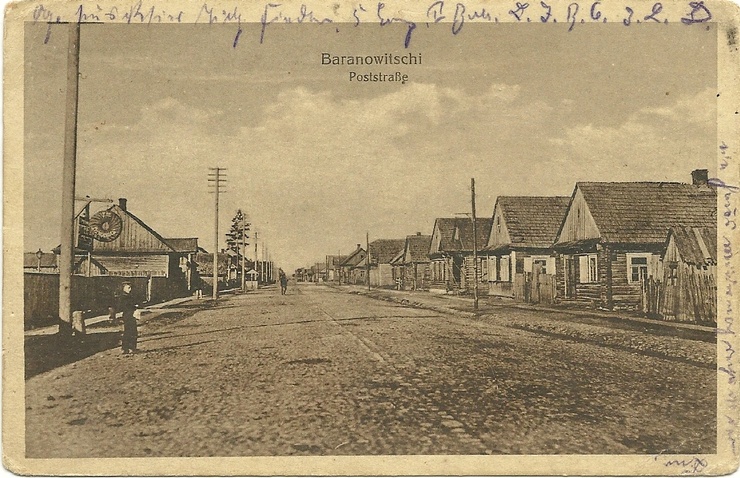 This German postcard shows Baranowicze in 1916. That July, during the Baranovichi offensive, the German army won a battle against the troops of the Russian Empire. Credit: Wikimedia Commons / Public Domain
This German postcard shows Baranowicze in 1916. That July, during the Baranovichi offensive, the German army won a battle against the troops of the Russian Empire. Credit: Wikimedia Commons / Public Domain -
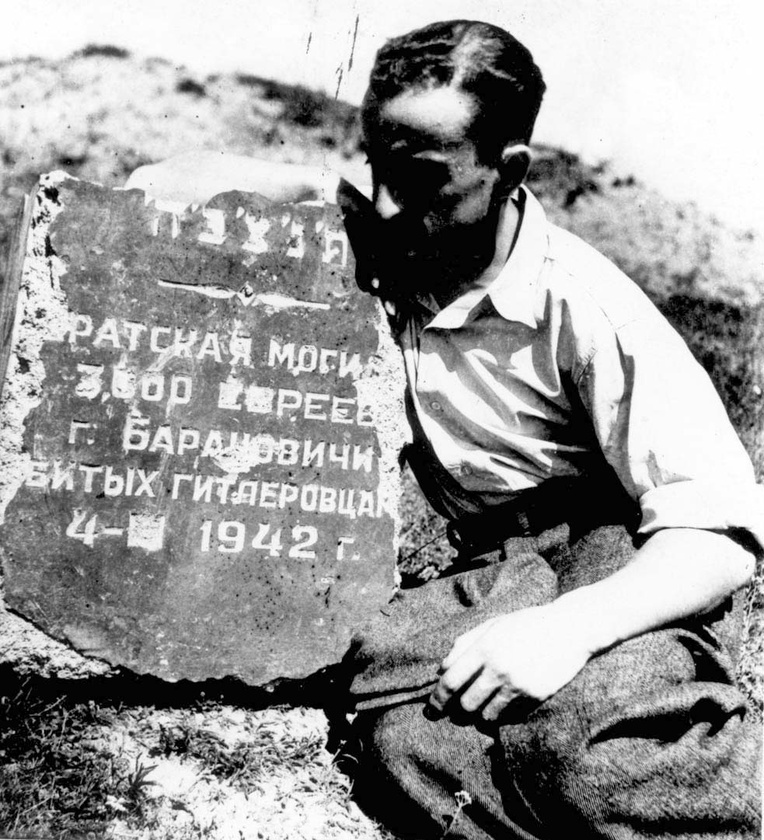 A broken gravestone from the Jewish cemetery of Baranowicze. Credit: Yad Vashem
A broken gravestone from the Jewish cemetery of Baranowicze. Credit: Yad Vashem -
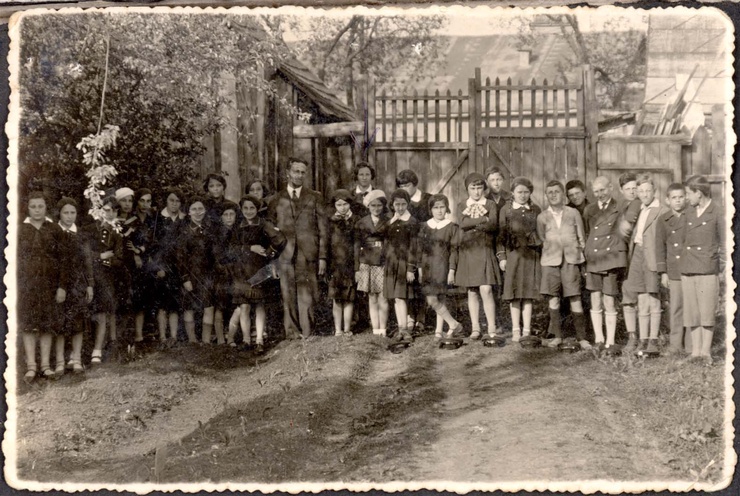 Picture of a 6th grade class in Baranowicze. The submitter (marked with an arrow) was the only member of her entire class who survived the Holocaust. Credit: Yad Vashem, courtesy of חנה רוטבלום
Picture of a 6th grade class in Baranowicze. The submitter (marked with an arrow) was the only member of her entire class who survived the Holocaust. Credit: Yad Vashem, courtesy of חנה רוטבלום -
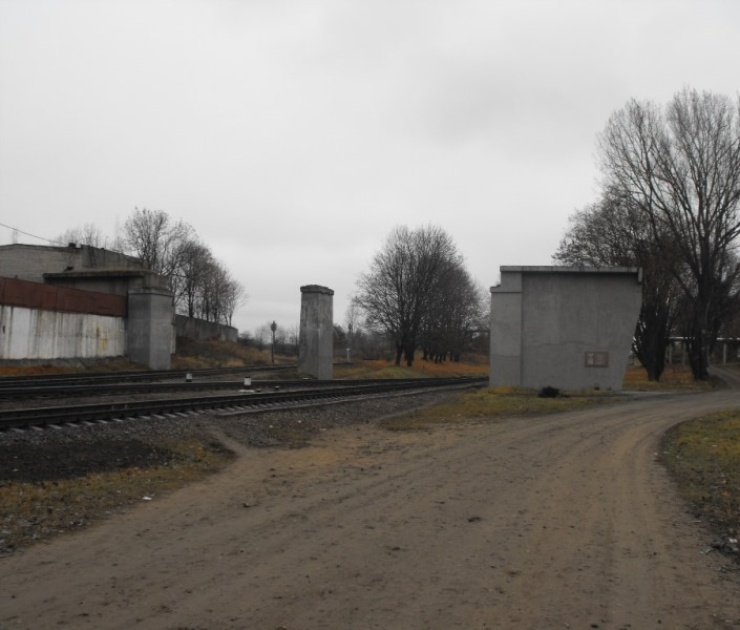 This memorial was erected in July 2009 to commemorate the 3,400 Jewish prisoners of the Baranovichi Ghetto killed on March 4, 1942. Credit: Vadim Akopyan / Wikimedia Commons / Public Domain
This memorial was erected in July 2009 to commemorate the 3,400 Jewish prisoners of the Baranovichi Ghetto killed on March 4, 1942. Credit: Vadim Akopyan / Wikimedia Commons / Public Domain -
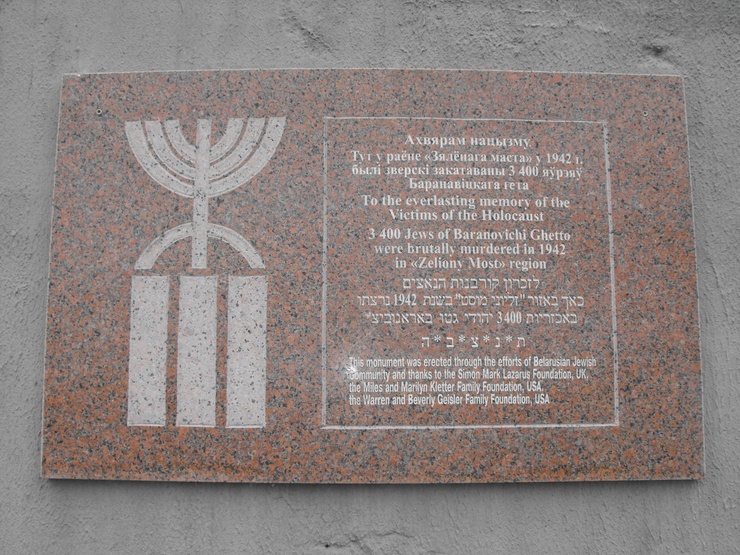 The memorial plaque reads: "To the everlasting memory of the Victims of the Holocaust; 3,400 Jews of Baranovichi Ghetto were brutally murdered in 1942 in 'Zeliony Most' (Green Bridge) region". Credit: Vadim Akopyan / Wikimedia Commons / Public Domain
The memorial plaque reads: "To the everlasting memory of the Victims of the Holocaust; 3,400 Jews of Baranovichi Ghetto were brutally murdered in 1942 in 'Zeliony Most' (Green Bridge) region". Credit: Vadim Akopyan / Wikimedia Commons / Public Domain -
 A memorial in the Jewish cemetery of Baranowicze. It reads: "Here was a Jewish cemetery." Credit: sztetl.org.pl/Krzysztof Bielawski
A memorial in the Jewish cemetery of Baranowicze. It reads: "Here was a Jewish cemetery." Credit: sztetl.org.pl/Krzysztof Bielawski -
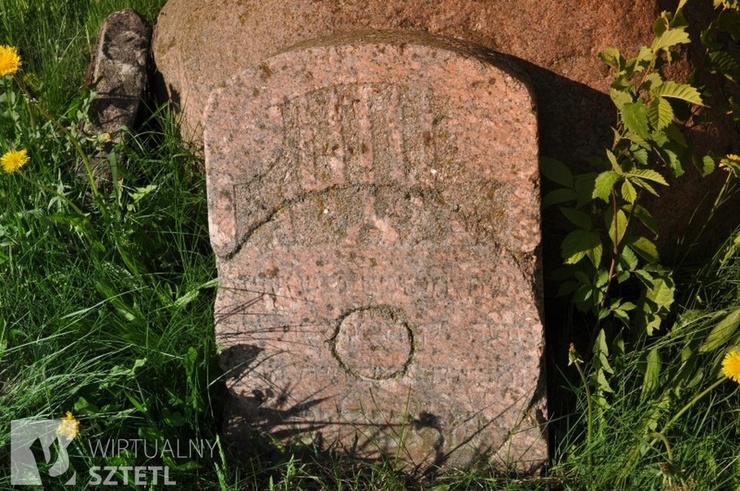 The Jewish cemetery in Baranowicze, May 2011. Credit: sztetl.org.pl/Krzysztof Bielawski
The Jewish cemetery in Baranowicze, May 2011. Credit: sztetl.org.pl/Krzysztof Bielawski -
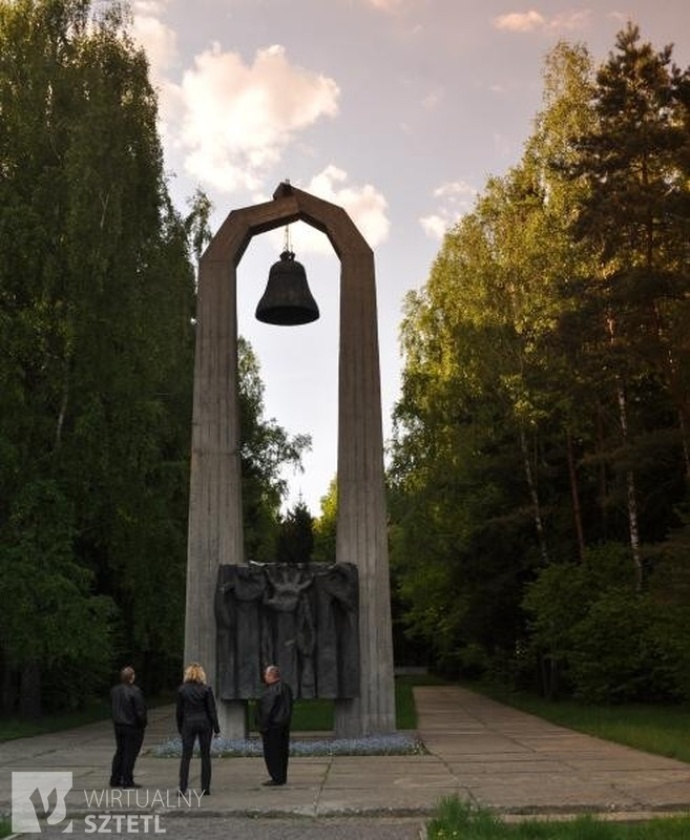 A memorial to the victims of the Holocaust on the site of executions and a mass grave, May 2011. Credit: sztetl.org.pl/Krzysztof Bielawski
A memorial to the victims of the Holocaust on the site of executions and a mass grave, May 2011. Credit: sztetl.org.pl/Krzysztof Bielawski -
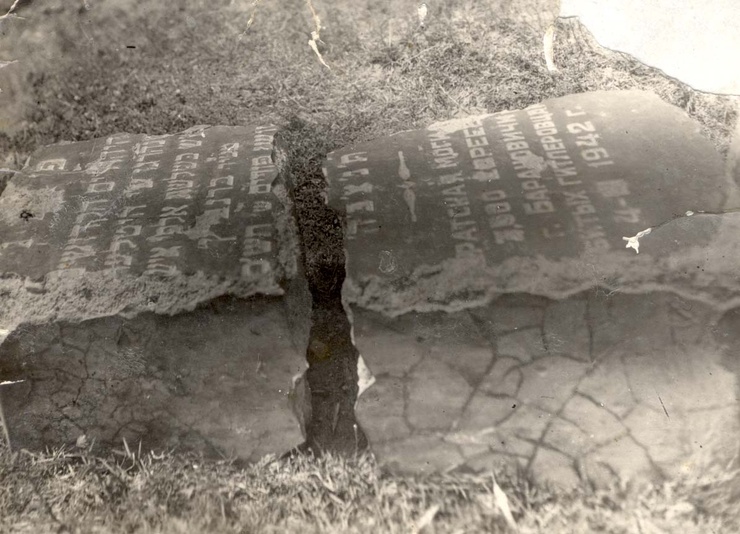 A memorial in Baranowicze for three thousand Jews who were killed by the Nazis in this location. Credit: Yad Vashem
A memorial in Baranowicze for three thousand Jews who were killed by the Nazis in this location. Credit: Yad Vashem
Destroyed Communities Memorial Slope
Baranowicze: Survivors
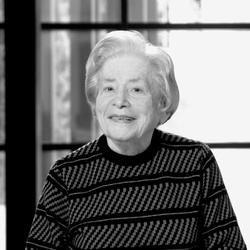
We sat. The hole was only to sit. We couldn’t lie down there. That’s how the days are gone. Dark. We could see nothing. We could hear nothing much.
What I remember is only the first days when my mother took me to cheder [Jewish elementary school]. It was approximately at the age of five and she tossed me some coins, like the angels ascended, coins.
